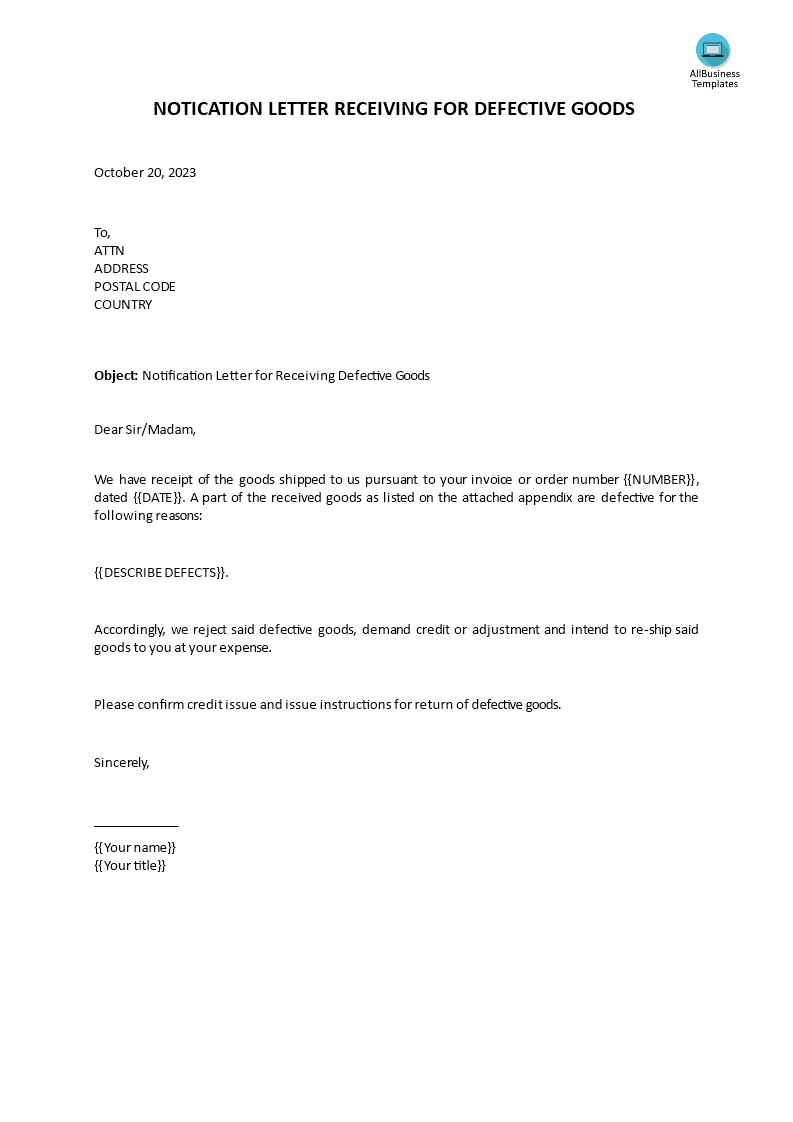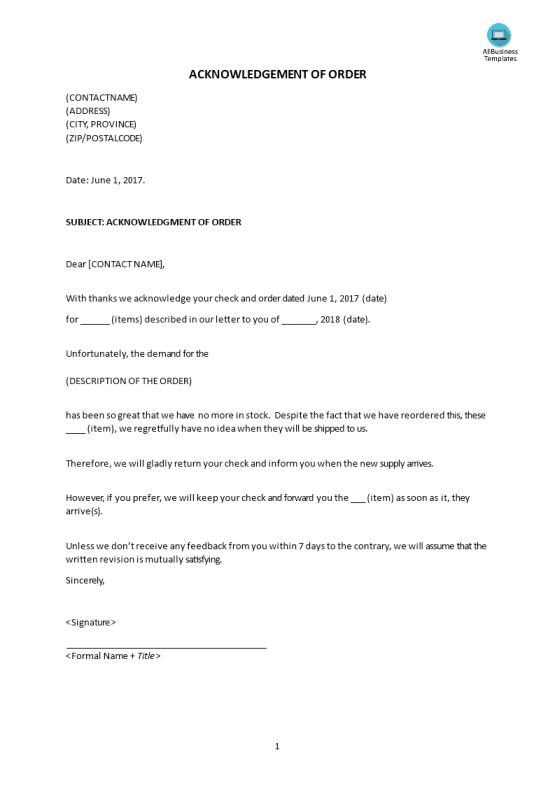Received Defective Goods List Template

I-Save, punan ang mga blanko, i-printa, Tapos na!
Is your company in need of a Received Defective Goods List Template? Do you need a List with received defective goods that you can send to your supplier after receiving defective goods? Download this List Defective Goods now!
Mga magagamit na premium na format ng file:
.docx- Itong dokumento ay sertipikado ng isang Propesyonal
- 100% pwedeng i-customize
Business Negosyo logistics Lohistika list received defective goods list defective goods defective goods list received defective goods list return defective goods defect in goods received defective goods
Do you need a List with a received defective goods template that you can send to your supplier after receiving defective goods? Is your company in need of a Received Defective Goods List Template? We have a template that you can download and use. It's free to download and you can customize it to fit your needs. It's a great way to keep track of defective products and make sure they don't go to waste. Download our template now!
The Received Defective Goods List is an important tool for documenting and managing quality control issues in the supply chain. It serves several purposes:
A Received Defective Goods List is a document used in supply chain management, logistics, and procurement to record and document any defective or damaged items that are received from a supplier or vendor. When goods arrive at a receiving facility, such as a warehouse or distribution center, they are typically inspected for quality and condition. If any items are found to be defective, damaged, or not meeting the required specifications, they are listed on the Received Defective Goods List.
Key elements of a Received Defective Goods List include:
- Item Details:
- Description of the defective goods, including the product name, SKU (Stock Keeping Unit) or part number, and a brief description of the issue.
- Quantity:
- The number of defective items received. This can include units, cases, pallets, or other relevant measurement units.
- Condition:
- A description of the defect or damage, including specifics about the condition of the items. This might include information about broken packaging, visible damage, or functional issues.
- Purchase Order Information:
- Reference to the original purchase order or order number associated with the shipment of goods.
- Vendor/Supplier Information:
- Details about the supplier or vendor from whom the defective goods were received. This may include the supplier's name, contact information, and any identification numbers or codes.
- Date of Receipt:
- The date on which the defective goods were received.
- Disposition:
- Information about what action will be taken with the defective goods. This might include returning the items to the supplier, arranging for repairs or replacements, or disposing of the items.
- Responsible Party:
- Identification of the individual or department responsible for handling the defective goods and overseeing the resolution process.
- Remarks or Comments:
- Any additional comments or notes are relevant to the defective goods, such as details about inspections or communications with the supplier.
The Received Defective Goods List is an important tool for documenting and managing quality control issues in the supply chain. It serves several purposes:
- Quality Control: It helps maintain product quality by identifying and addressing defective goods promptly.
- Documentation: It provides a record of defective items received, which can be used for tracking, reporting, and communication with suppliers.
- Resolution: It guides the process of resolving issues with the supplier, whether that involves returns, replacements, refunds, or other corrective actions.
- Data Analysis: Over time, the data from Received Defective Goods Lists can be analyzed to identify patterns and trends related to supplier quality and performance.
- Compliance: It ensures compliance with contractual agreements and quality standards established with suppliers.
In addition to documenting defective goods, it's important to communicate the issues to the supplier promptly, following any agreed-upon procedures outlined in supply agreements or purchase contracts.
Download this List of defective goods now or check out our professional Notice Of Defective Goods template now!
DISCLAIMER
Wala sa 'site' na ito ang dapat ituring na legal na payo at walang abogado-kliyenteng relasyon na itinatag.
Mag-iwan ng tugon. Kung mayroon kang anumang mga katanungan o mga komento, maaari mong ilagay ang mga ito sa ibaba.

